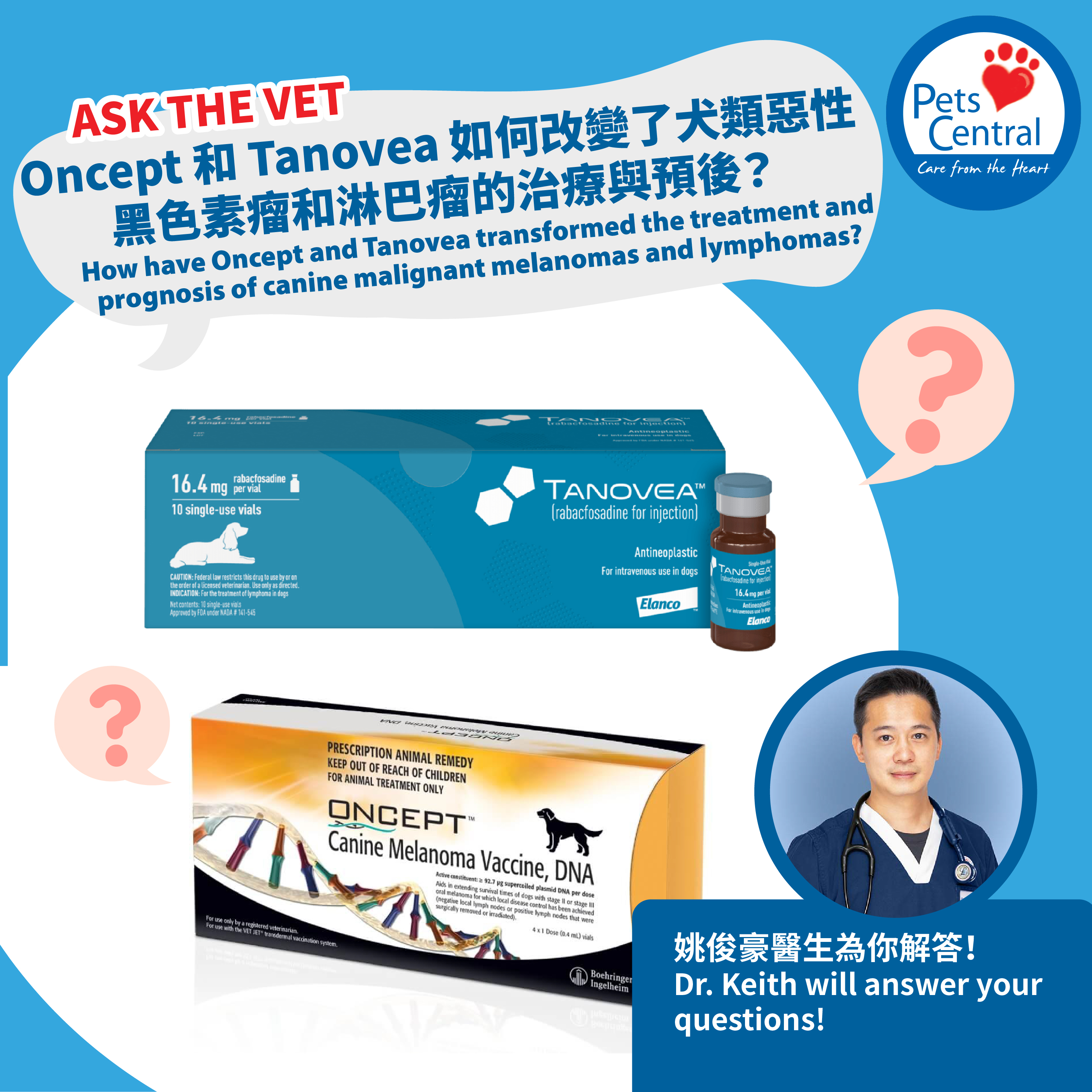
Oncept has transformed the treatment of malignant melanomas. Melanomas are the most common tumours that we see in the mouths of dogs, and they can also arise on foot pads, toes, and skin. At least 90% of oral melanomas have metastasised in a microscopic way by the time they are diagnosed. This means that surgery alone isn’t enough to treat melanomas—another treatment is needed to address the microscopic metastases and stop them from becoming a threat to health.
Chemotherapy isn’t very effective against melanomas—only one in three respond. Then along came Oncept, an immunotherapy that targets melanoma specifically. Oncept trains the immune system to recognise a marker on the surface of melanoma cells and to kill the cells that carry this marker. Within four months or so, Oncept is fully effective. Since we started using Oncept, we regularly see long-term survivors of malignant melanoma. Oncept is given as a primary course of one injection every two weeks, followed by a booster once every six months. Oncept takes around four months to be effective, during which time we are vigilant for tumour progression. We might manage progressing tumours with surgery, or we might use drugs that slow tumour growth to buy time for Oncept to become fully effective. Oncept is a vaccine, not chemotherapy, and it is very rare to see any side effects. There is a brief sting at the time of injection.
Occasionally, the response to Oncept makes foot pads and noses lose their black colour—this is a transient reaction that causes no other problems. We have been using Oncept since 2010, shortly after it became available outside North America. It has transformed outcomes for dogs with this tumour from universally poor before Oncept, to now very hopeful with Oncept and appropriate surgical care.
Lymphoma, another canine cancer, can be a very satisfying disease to treat when dogs go into remission in a few days and look obviously brighter and healthier. It can also be a disease that creates deep disappointment – when remissions don’t happen at all or are much shorter than we had hoped. When remissions are short, we need new drugs to rescue the situation. Rescue chemotherapy was a disappointing venture – rescued remissions were hard to get and often quite short 25 years ago.
Then came Tanovea. Tanovea is a new drug in a new class that specifically targets lymphoma. Tanovea was specifically developed for dogs rather than being a repurposed human drug. More dogs respond to Tanovea than to other drugs in a rescue setting, and in my experience the remissions tend to be much longer. Since I started using Tanovea, I have for the first time started seeing second remissions that are longer than first remissions. Tanovea is given as an infusion over 30 minutes once every 3 weeks.
What about side effects? Tanovea is similar to other chemotherapy drugs. Around one in four dogs will exhibit gut-related adverse effects including loss of appetite, vomiting and diarrhea. These typically resolve within a few days with minimal treatment. Fewer dogs will experience bone marrow suppression
or fever. Fewer still will have other side effects involving the kidney or lungs. Overall, my experience is that Tanovea is well tolerated by most dogs, especially when compared with the alternative – progression of lymphoma.
I’ve been very happy to have access to Tanovea nearly continuously since it was licensed for use. We always maintain stock because it is a very useful drug and my patients need it.